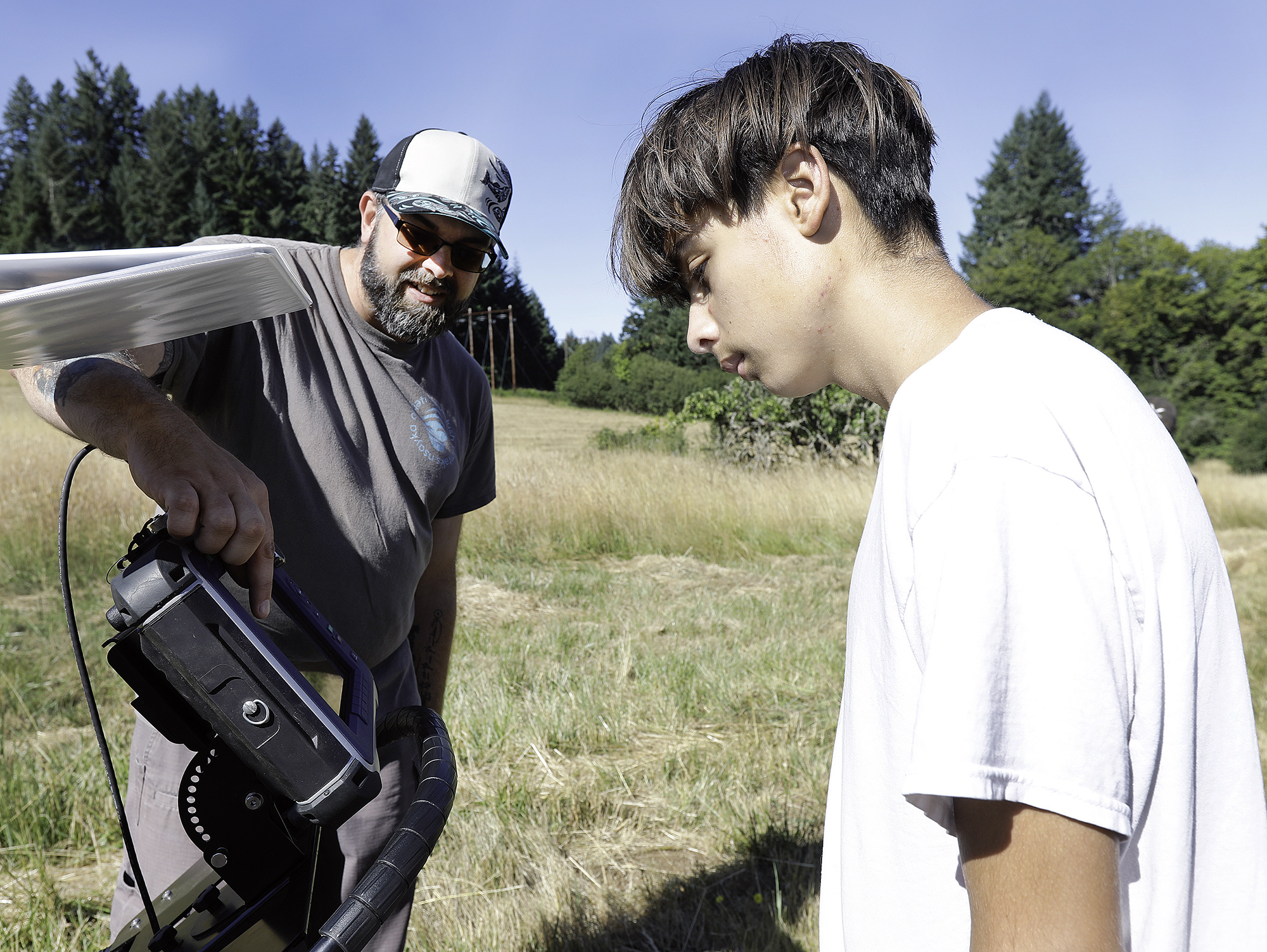Health & Education
Youth enjoy day of learning history, practicing skills

By Nicole Montesano
Smoke Signals staff writer
In a grassy field set up on the uyxat Powwow Grounds, with a large green plastic dragon as a target, youth practiced throwing darts with an atlatl, marveling at how much further their throws went than when tossed by hand, even with inexperienced users.
The stone-age spear thrower, which predates the bow and arrow, increased the range at which a hunter could target game animals, by providing greater leverage than simply hurling a dart or spear by hand. They were used in various forms by numerous cultures around the world.
Despite its hunters’ increased power and range however, the dragon sustained few wounds, with most of the darts either falling short or sailing over its head. Youth also discovered there’s a learning curve; how to flick the atlatl correctly, so the dart sails forth, rather than tumbling into the grass just a few feet in front the user.
The youth were attending a day camp put on by a collaboration between the Tribe’s Historic Preservation Office, Youth Enrichment’s hayu-munk skukum Program and Youth Education, intended to teach them about some of the history of the area.
Off to one side, youths Angel Mathews, Makalee King and Haideyn Markel-Hunt had tired of dart throwing long before the boys and were sitting in the grass visiting but said they had enjoyed learning to use the unfamiliar weapons.
“Not to toot my own horn, but I’m pretty good at it,” Markel-Hunt said.
“I was bad at it at first,” King said, but said that after practicing, she was able to fling her dart over the dragon’s head. A roar went up nearby, as one of the boys struck the dragon’s head with his dart.
The girls said they were especially looking forward to the next day, when the group planned a hike from South Lake to Hebo.
Further up the road, a second group was touring Fort Yamhill and learning about the Tribe’s work to map the site using ground penetrating radar, before later switching places with the atlatl group.
They took turns pushing the radar carriage and observed how it displays the geography under the soil.
Tribal Senior Archeologist Michael Lewis and Tribal Archeologist Jeremy Johnson explained the fort’s history, noting that previous efforts by archeologists, and later the state, tended to focus heavily on the viewpoint of soldiers. The Tribe, they noted, wants to focus on the experiences of Oregon Tribal people who were moved from their homelands to the Grand Ronde Reservation in the 1850s. Once arrived, they found themselves camping alongside multiple other Tribes who spoke different languages and had different customs, all overseen by the foreign invaders manning the fort.
The fort was decommissioned in 1866, after just 10 years, and few traces remain of the buildings today.
Youth Tim Murphy, who described himself as “a big nerd when it comes to history,” said he is interested in learning about the history of the area.
“I was not aware this was a fort,” he said. “I just want to learn more about my Tribe. I know very little about where I’m from. I’ve lived here my entire life, but I know very little about before the 1950s.”
Youth heard from Tribal Cultural Protection Coordinator Cheryl Pouley about the Oregon Trail of Tears, when Rogue Valley Tribes were forced to walk from Medford to Grand Ronde and about the identity of General Phil Sheridan, learning he was not merely the man for whom the nearby town was named, but a Union general in the Civil War. Before the war, however, Sheridan was the commander of Fort Yamhill, overseeing the Grand Ronde Reservation.
The house he occupied, although moved and shortened from its original two stories, stands on the property today. Students peered in the windows, and observed a model of the original fort, with its gun ports pointing in all directions, before hiking up the trail to observe the view of the valley below, that made the fort’s location so useful for the soldiers.
“The women’s story doesn’t get told very much,” Pouley said, explaining that women from the Tribes probably worked as laundresses at the fort.
They probably also served as maids and housekeepers for the officers, Johnson noted.
“We want to bring the stories of the Tribe forward,” Pouley said.
